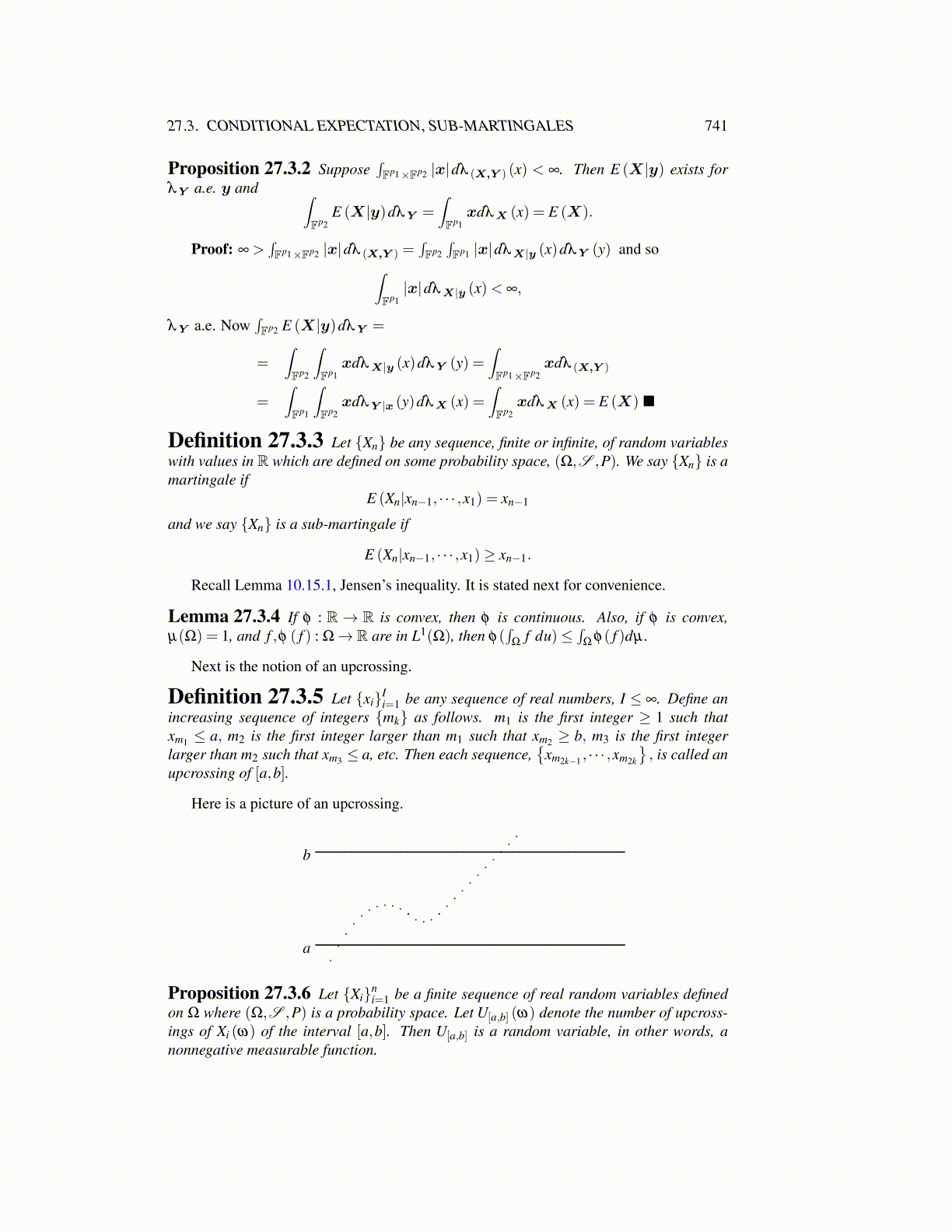
27.3. CONDITIONAL EXPECTATION, SUB-MARTINGALES 741
Proposition 27.3.2 Suppose∫Fp1×Fp2 |x|dλ (X,Y ) (x) < ∞. Then E (X|y) exists for
λY a.e. y and ∫Fp2
E (X|y)dλY =∫Fp1xdλX (x) = E (X).
Proof: ∞ >∫Fp1×Fp2 |x|dλ (X,Y ) =
∫Fp2
∫Fp1 |x|dλX|y (x)dλY (y) and so∫
Fp1|x|dλX|y (x)< ∞,
λY a.e. Now∫Fp2 E (X|y)dλY =
=∫Fp2
∫Fp1xdλX|y (x)dλY (y) =
∫Fp1×Fp2
xdλ (X,Y )
=∫Fp1
∫Fp2xdλY |x (y)dλX (x) =
∫Fp2xdλX (x) = E (X) ■
Definition 27.3.3 Let {Xn} be any sequence, finite or infinite, of random variableswith values in R which are defined on some probability space, (Ω,S ,P). We say {Xn} is amartingale if
E (Xn|xn−1, · · · ,x1) = xn−1
and we say {Xn} is a sub-martingale if
E (Xn|xn−1, · · · ,x1)≥ xn−1.
Recall Lemma 10.15.1, Jensen’s inequality. It is stated next for convenience.
Lemma 27.3.4 If φ : R → R is convex, then φ is continuous. Also, if φ is convex,µ(Ω) = 1, and f ,φ ( f ) : Ω→ R are in L1(Ω), then φ(
∫Ω
f du)≤∫
Ωφ( f )dµ .
Next is the notion of an upcrossing.
Definition 27.3.5 Let {xi}Ii=1 be any sequence of real numbers, I ≤ ∞. Define an
increasing sequence of integers {mk} as follows. m1 is the first integer ≥ 1 such thatxm1 ≤ a, m2 is the first integer larger than m1 such that xm2 ≥ b, m3 is the first integerlarger than m2 such that xm3 ≤ a, etc. Then each sequence,
{xm2k−1 , · · · ,xm2k
}, is called an
upcrossing of [a,b].
Here is a picture of an upcrossing.
b
a
Proposition 27.3.6 Let {Xi}ni=1 be a finite sequence of real random variables defined
on Ω where (Ω,S ,P) is a probability space. Let U[a,b] (ω) denote the number of upcross-ings of Xi (ω) of the interval [a,b]. Then U[a,b] is a random variable, in other words, anonnegative measurable function.